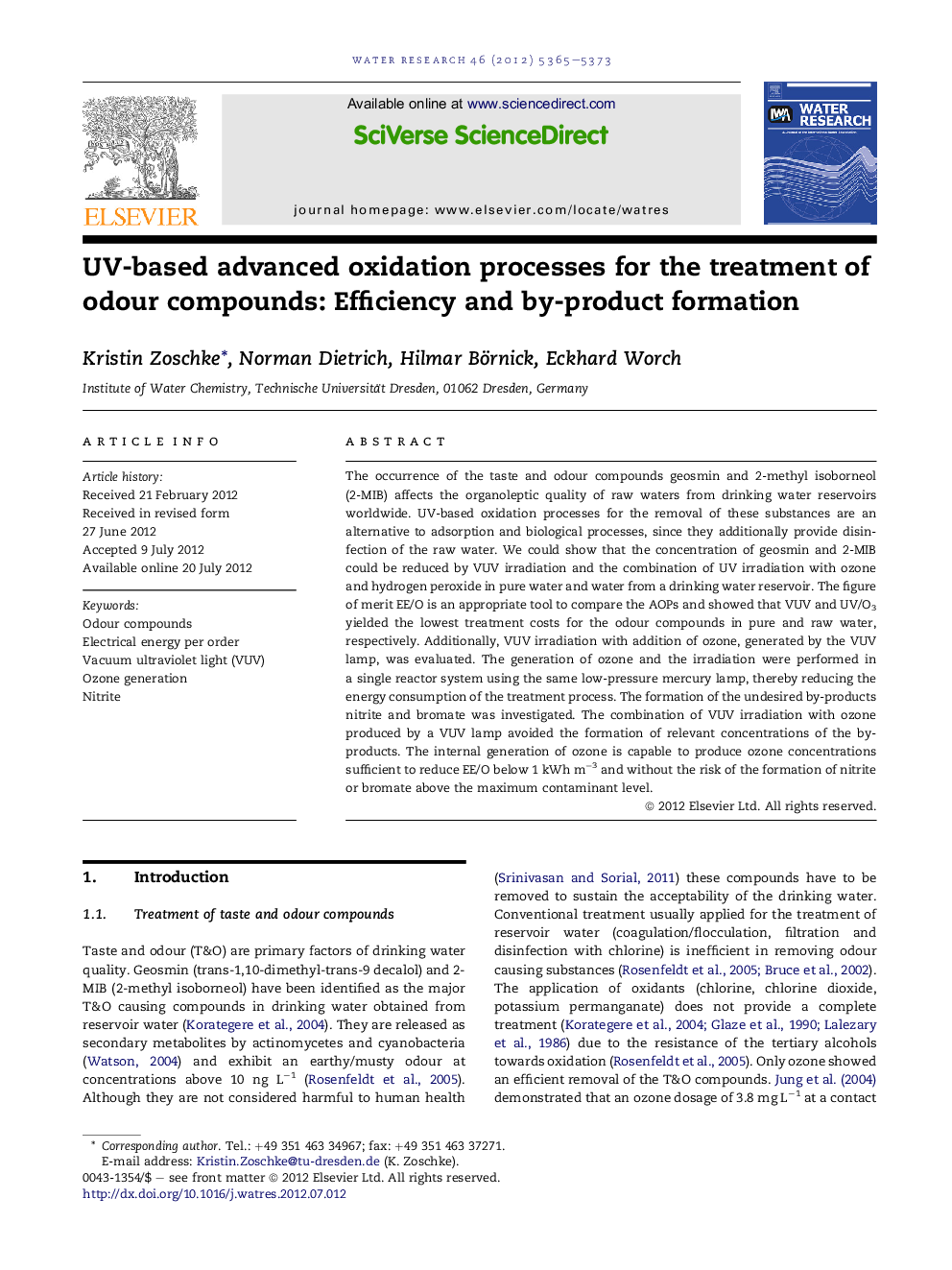| کد مقاله | کد نشریه | سال انتشار | مقاله انگلیسی | نسخه تمام متن |
|---|---|---|---|---|
| 4482762 | 1316868 | 2012 | 9 صفحه PDF | دانلود رایگان |

The occurrence of the taste and odour compounds geosmin and 2-methyl isoborneol (2-MIB) affects the organoleptic quality of raw waters from drinking water reservoirs worldwide. UV-based oxidation processes for the removal of these substances are an alternative to adsorption and biological processes, since they additionally provide disinfection of the raw water. We could show that the concentration of geosmin and 2-MIB could be reduced by VUV irradiation and the combination of UV irradiation with ozone and hydrogen peroxide in pure water and water from a drinking water reservoir. The figure of merit EE/O is an appropriate tool to compare the AOPs and showed that VUV and UV/O3 yielded the lowest treatment costs for the odour compounds in pure and raw water, respectively. Additionally, VUV irradiation with addition of ozone, generated by the VUV lamp, was evaluated. The generation of ozone and the irradiation were performed in a single reactor system using the same low-pressure mercury lamp, thereby reducing the energy consumption of the treatment process. The formation of the undesired by-products nitrite and bromate was investigated. The combination of VUV irradiation with ozone produced by a VUV lamp avoided the formation of relevant concentrations of the by-products. The internal generation of ozone is capable to produce ozone concentrations sufficient to reduce EE/O below 1 kWh m−3 and without the risk of the formation of nitrite or bromate above the maximum contaminant level.
Figure optionsDownload high-quality image (144 K)Download as PowerPoint slideHighlights
► The efficiency of UV-based AOPs for the removal of odour compounds was studied.
► The processes VUV and UV/O3 yielded treatment costs below 1 kWh m−3.
► The irradiation and generation of ozone were performed with a single UV/VUV lamp.
► VUV/O3 (with internal O3 generation) avoided the formation of relevant by-products.
Journal: Water Research - Volume 46, Issue 16, 15 October 2012, Pages 5365–5373